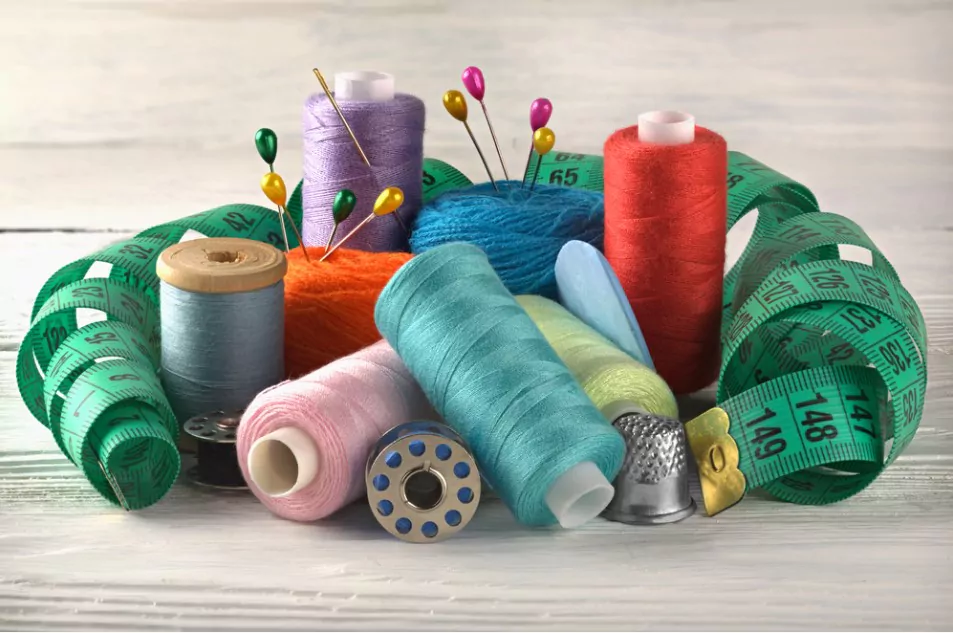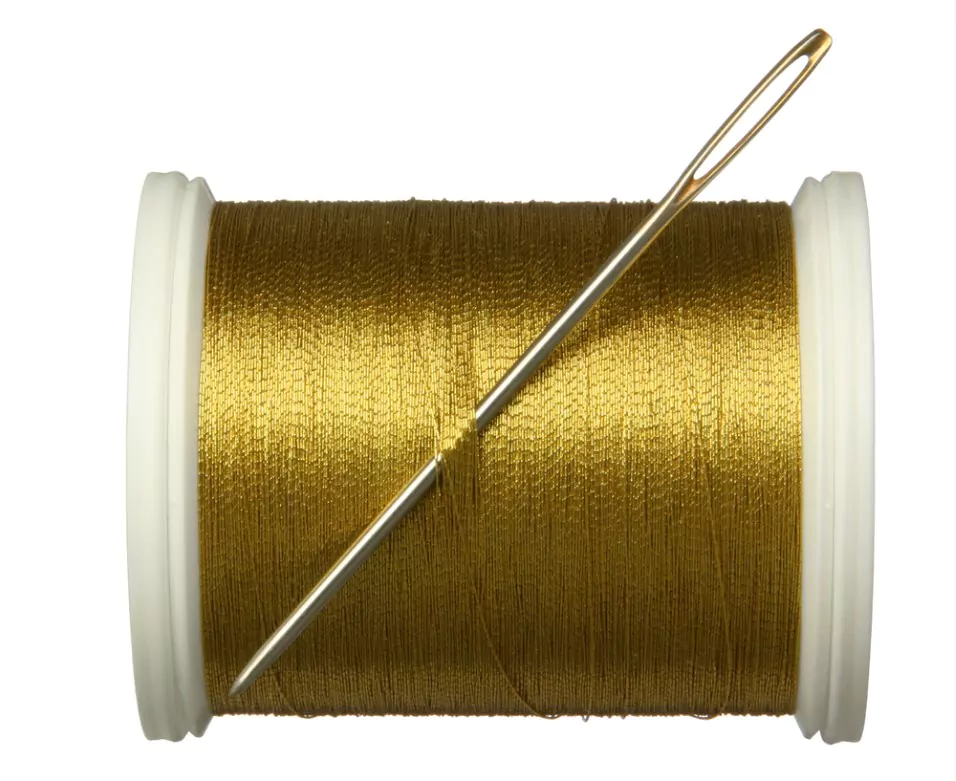Comparing and Contrasting Types of Sewing Thread

When it comes to sewing, one of the most important and often overlooked components is the thread. This thread is a thin, flexible strand that may seem small, but it plays a crucial role in stitching together pieces of fabric to create a beautiful and functional finished product. Whether you are a beginner or an experienced sewer, understanding what sewing threads are and their properties can help you choose the right thread for your project, ensuring a high-quality result. In this article, we’ll explore the basics of the sewing thread, types of sewing thread, materials, and the characteristics of their uses and applications. So, grab the fabric of your choice, a thread, and let’s dive in!
1 Different types of sewing thread available in the sewing thread industry
Cotton Thread

Cotton threads are natural threads that are commonly used for sewing natural fibres such as cotton, wool, and linen. It is strong, durable, and heat-resistant, making it ideal for sewing quilts, upholstery, and home decor projects. Cotton thread comes in various colours, sizes, and weights to suit different sewing projects. Cotton threads are suitable for sewing natural fibres, quilting, and home decor projects such as curtains, tablecloths, and bedding.
Polyester Thread

This synthetic thread is known for its strength, durability, and colour fastness. It is resistant to abrasion, heat, and chemicals, making it ideal for sewing synthetic fabrics, heavy-duty fabrics, and high-stress applications such as denim, sportswear, and outdoor gear. Polyester thread comes in a variety of colours, sizes, and weights, making it a popular choice for many sewing projects. The soft texture of the thread is ideal for synthetic fabrics, denim, and heavy-duty fabrics such as canvas, leather, and outdoor gear. It is also commonly used in the general sewing practice and sewing machines.
Nylon Thread

This synthetic thread is known for its strength and stretch, making it ideal for sewing activewear, swimwear, and other stretchy fabrics that require a lot of give. It is also resistant to abrasion and chemicals, making it suitable for outdoor gear, leatherwork, and heavy-duty fabrics.
Silk Thread

This natural thread is known for its sheen, strength, and softness, making it suitable for sewing delicate fabrics such as silk, satin, and chiffon. Silk thread is available in a range of colours and sizes, making it a popular choice for hand-sewing and embroidery projects. These threads are best for activewear, swimwear, and other stretchy fabrics that require a lot of give. It is also commonly used for leatherwork, outdoor gear, and other heavy-duty fabrics.
Metallic Thread

This decorative thread is used for embellishing garments, accessories, and home décor projects. It is made of a metallic-coated core wrapped with nylon or polyester fibres. Metallic thread comes in a variety of colours and sizes, making it ideal for adding sparkle and shine to any sewing project. It is suitable for delicate fabrics such as silk, satin, and chiffon, as well as hand-sewing and embroidery projects. You can use them to add sparkle and shine to garments, accessories, and home décor projects.
Rayon Thread
This synthetic thread is known for its sheen and softness, making it ideal for embroidery, decorative stitching, and quilting. Rayon thread comes in various colours and weights, making it versatile and suitable for different sewing projects. These threads are ideal for embroidery, decorative stitching, and quilting projects, as well as for making attractive topstitching on lightweight and medium-weight fabrics.
2 Classification of the sewing threads according to their finishes
Sewing thread classification based on finishes refers to the process of categorising sewing threads according to the types of treatments applied to them to improve their performance and appearance. The finishes given to a sewing thread can influence its durability, strength, flexibility, and ability to resist abrasion, moisture, and heat.
The following are the common finishes applied to sewing threads:
Mercerisation
Mercerization is a process of treating the fabric of cotton with a caustic soda solution, followed by washing and stretching. The process results in a stronger and more lustrous thread. In addition, the caustic soda solution causes the fibres to swell, resulting in an increased surface area that reflects more light, giving the thread a shiny appearance. Mercerised threads are also less prone to shrinkage, pilling, and breaking.
Glazed
Glazed threads are created by passing the thread through a hot wax or resin bath. The wax or resin forms a shiny, smooth surface on the thread, making it stronger and more resistant to abrasion. The glaze also helps to protect the thread from moisture and dirt.
Bonded
Bonded threads are created by applying a resin coating to the thread. The resin coating helps to make the thread smoother, stronger, and more uniform. Bonded threads are ideal for heavy-duty sewing applications, such as outdoor gear, leatherwork, and upholstery.
Silicone
Silicone-coated threads are created by coating the thread with silicone, which makes it more resistant to heat, moisture, and chemicals. The silicone coating helps to protect the thread from damage caused by exposure to extreme temperatures, moisture, and chemicals. Silicone-coated threads are commonly used in industrial applications, such as automotive and aerospace manufacturing.
Soft
Soft threads are created by treating the thread with special chemicals that make it softer and more pliable. Soft threads are ideal for use in delicate fabrics such as silk and rayon, as well as for hand sewing and embroidery.
Twisted
Twisted threads are created by twisting two or more strands of thread together. The twisting process creates a stronger and more durable thread that is ideal for heavy-duty sewing applications such as upholstery, leatherwork, and outdoor gear.
3 Wrapping Up
In conclusion, understanding the different types of sewing threads and their finishes is crucial for achieving successful sewing projects. From cotton to polyester to nylon, each thread type offers unique properties and advantages that cater to different sewing needs. Additionally, the finish of a thread can affect its durability, strength, and appearance. By choosing the right thread type and finish, you can ensure your sewing projects stand the test of time. So next time you’re embarking on a sewing project, consider the thread type and finish carefully, and enjoy the satisfaction of a well-sewn piece that looks and feels great.
FAQ's about Types of Sewing Thread
What is the strongest sewing thread?
The strongest sewing thread is typically made from synthetic materials such as nylon, polyester, or Kevlar. These threads are known for their high tensile strength, durability, and resistance to wear and tear.
Among synthetic threads, Kevlar is considered the strongest due to its unique composition and properties. Kevlar is a type of synthetic fiber that is used in a variety of high-stress applications such as bulletproof vests, racing sails, and aerospace components. Kevlar thread is extremely strong and has high resistance to abrasion and impact.
Polyester and nylon are also popular choices for strong sewing thread. Polyester thread is known for its strength, elasticity, and resistance to sunlight and chemicals, while nylon thread is strong, flexible, and resistant to abrasion and moisture.
When choosing a sewing thread for a specific project, it’s important to consider the type of fabric, the weight of the thread, and the specific properties that are important for the project’s requirements. In general, synthetic threads offer the highest strength and durability for a range of sewing projects.
What thread do tailors use?
The type of thread that tailors use depends on the fabric they are working with and the purpose of the stitching. Here are some commonly used threads in tailoring:
- Cotton thread: This is a versatile thread that can be used for a variety of fabrics, from lightweight to heavy-weight. It is strong, durable, and comes in a wide range of colors.
- Polyester thread: This type of thread is very strong and resistant to wear and tear. It is often used for heavier fabrics, such as denim, canvas, and leather.
- Silk thread: This type of thread is very fine and delicate, and is often used for sewing silk and other delicate fabrics. It is not as strong as cotton or polyester thread, but it is perfect for creating invisible stitches on delicate fabrics.
- Nylon thread: This type of thread is very strong and durable, and is often used for sewing items that will be subjected to a lot of wear and tear, such as outdoor gear and heavy-duty bags.
Which thread is thicker 40 or 50?
When it comes to sewing thread, the general rule is that the higher the number, the finer and thinner the thread. So, in this case, thread 50 is thinner than thread 40.
To give you a better idea, the numbers on sewing threads refer to the thread weight, which is a measure of the thread’s thickness. For example, a 40-weight thread is thicker than a 50-weight thread. A 30-weight thread would be thicker than a 40-weight thread, and so on.
So, if you need a thicker thread for your sewing project, you would choose a lower weight number. If you need a finer thread for more delicate work, you would choose a higher weight number.
Community Q&A
About This Article
This article has been viewed 593 times.



